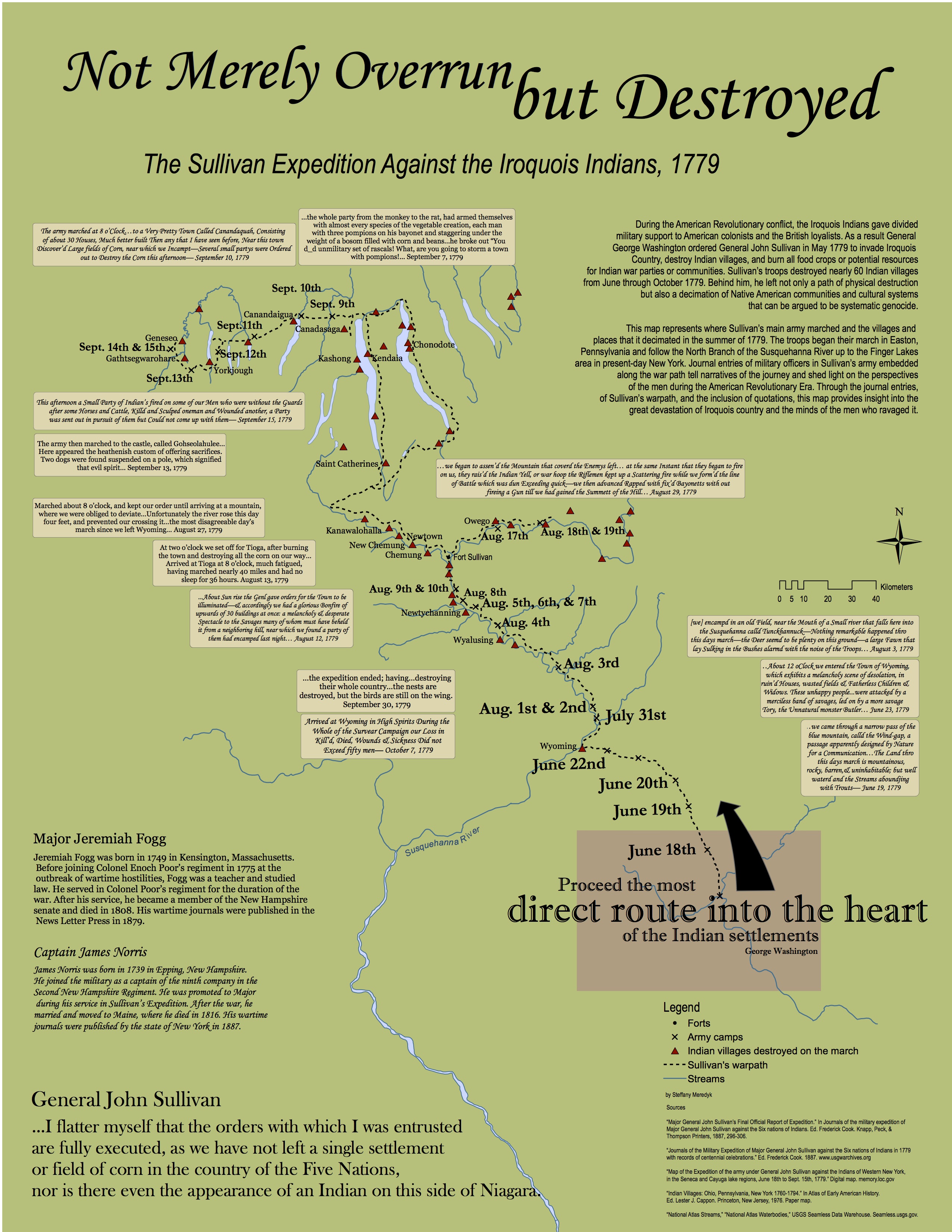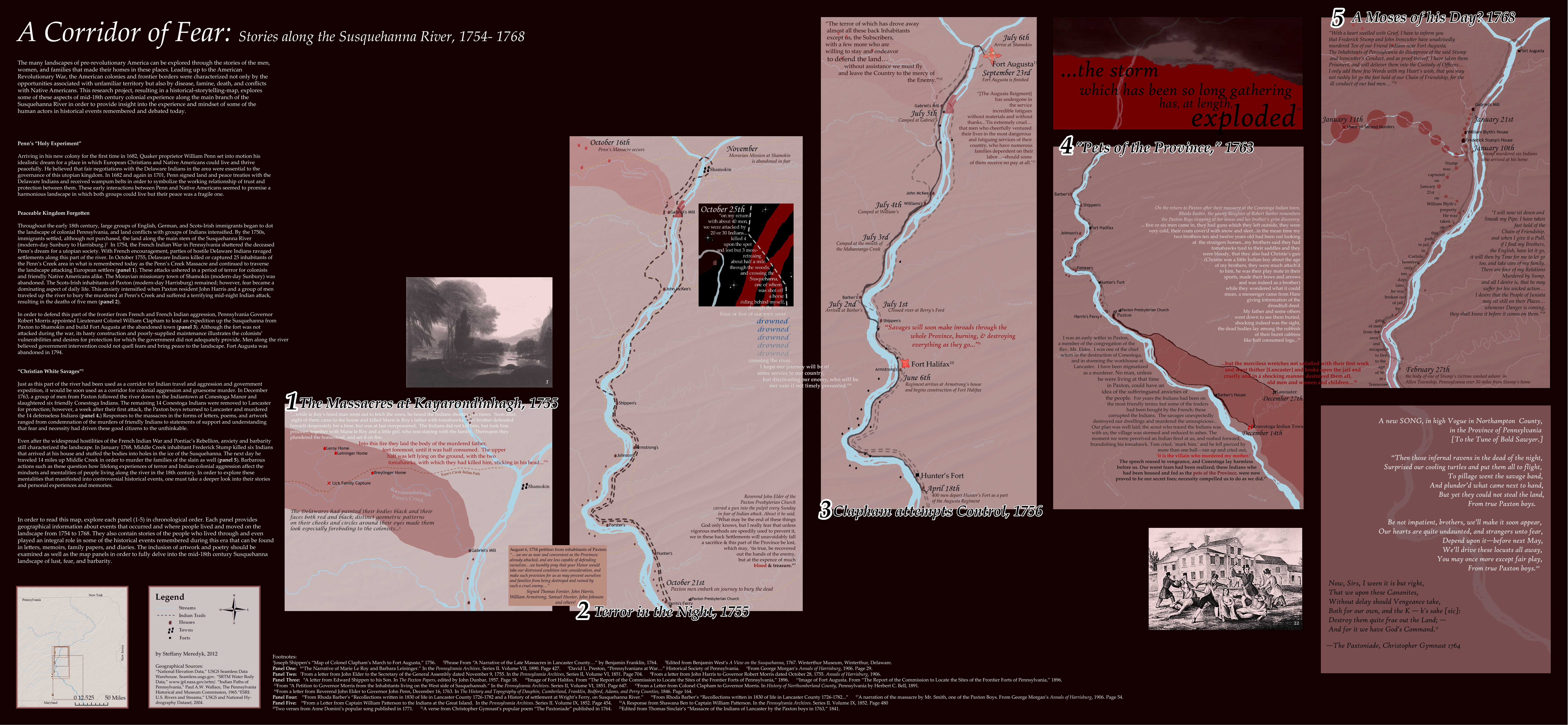
Over the last three and half years, I have been working with Steffany Meredyk, Class of 2014, on the Cultures at the Confluence project. What started out as a mainly textually based project to transcribe and translate the Moravian mission diaries from Shamokin, Pa has turned into a far more complex and rewarding investigation into the limits and challenges associated with spatial representation in historical narratives. In our collaboration, Steffany and I have grappled with the question of how to represent cartographically the lived experience of those who traversed the Susquehanna Country in the mid-18th century. While I was working on creating the textual edition of the diaries, Steffany started taking courses on GIS. One of the first maps she produced, in a class with Prof. Duane Griffin, shows her early engagement with critical GIS, following the models presented by Margaret Pearce in her work on indigenous mapping.[1] Steffany drew on archival materials to embed the observations of Sullivan’s troops into the map she drew to depict the advance of the campaign to eradicate the Iroquois along the North Branch of the Susquehanna River in 1779. As she writes: “During the American Revolutionary conflict, the Iroquois Indians gave divided military support to American colonists and the British loyalists. As a result General George Washington ordered General John Sullivan in May 1779 to invade Iroquois Country, destroy Indian villages, and burn all food crops or potential resources for Indian war parties or communities. Sullivan’s troops destroyed nearly 60 Indian villages from June through October 1779. Behind him, he left not only a path of physical destruction but also a decimation of Native American communities and cultural systems that can be argued to be systematic genocide… “This map represents where Sullivan’s main army marched and the villages and places that it decimated in the summer of 1779. The troops began their march in Easton, Pennsylvania and follow the North Branch of the Susquehanna River up to the Finger Lakes area in present-day New York. Journal entries of military officers in Sullivan’s army embedded along the war path tell narratives of the journey and shed light on the perspectives of the men during the American Revolutionary Era. Through the journal entries, of Sullivan’s warpath, and the inclusion of quotations, this map provides insight into the great devastation of Iroquois country and the minds of the men who ravaged it.”

In the summer of 2012, supported by funds from the Chesapeake Conservancy, Steffany and another student, Bethany Dunn ’14 worked on a mapping project on the main stem of the Susquehanna River between Harrisburg and Sunbury. This project was far more ambitious: to map the river not as a continuous geographical feature but rather as a segmented and complex corridor of fear. The mid-eighteenth century saw the multiple murders of both Indians and settlers along the river, the most notorious of these being the Paxton Boys massacre of the Susquehannock Indians at Conestoga and the Frederick Stump murders on Middle Creek. Steffany set out to represent the increasingly racialized politics of the Pennsylvania Backcountry, again drawing on manuscript maps, archival materials, journals, letters, and broadsheets to map the complexity of human experience. This draft is currently the subject of Steffany’s Honors thesis in Geography at Bucknell University.